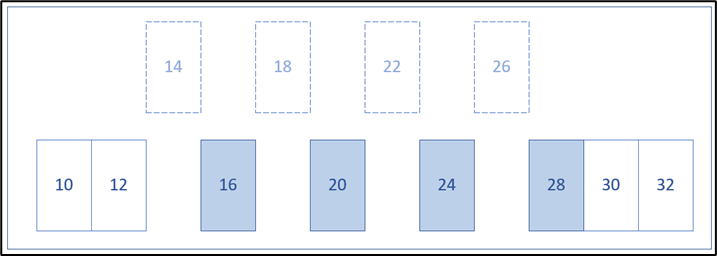- Where existing properties in a street are numbered, new properties should be allocated a number
- Duplication of any numbers currently in use in the same street should not occur.
- The new number should be numbered to the street name which provides direct access to the entrance to the building.
- An extension to the street numbering sequence should not be used for the internal numbering of a building.
- The street numbering sequence should only be used to identify separate entrances to the building.
- If in accordance with Council policy, a numbered property may also be allocated a name.
- The combination of property number, property name and street name should be unique within that Authority or at least two postcode areas.
- Property numbers should be displayed as numerals and not written, for example 26 Smith Street, not Twenty-Six, Smith Street.
- A business name should not take the place of a number or a building name.
- Where existing properties on a street are named only, consideration may be given to naming a new property and omitting the allocation of a number.
- If, for example, a block of flats is to be built in the middle of a numbered street and cannot be integrated into the current numbering of the street, a building name and suffix may be given to the block and the flats numbered internally using a unique numbering sequence.
- Numbering should be allocated in accordance with the existing numbering scheme, for example, odds on the left, even numbers on the right. Where there is local variance to this rule the local numbering should be reflected in infill numbering.
- Where the legacy numbering on an existing street is in place and is unstructured and / or illogical, try to ascertain the original numbering scheme for the street and follow that, without duplicating any numbers currently in use.
- Numbers should be dropped where there is the possibility of infill development.
- Buildings numbered on the street of which their main entrance or delivery point is accessed.
- Buildings on corner plots are numbered on the street towards which the main entrance is accessed. If pedestrian access is not possible from that street, the building may be numbered with the street giving access. Occupier’s preference will not be a relevant consideration.
- If a building has entrances in more than one street, then each entrance should be numbered to the appropriate street last used to access the entrance. Exceptions may be made, depending on the circumstances, for example a house divided into flats.
- Where the development is part way along an existing street, numbering should follow from the adjacent properties, for example, a site between existing numbers 12 and 30 consisting of 4 new houses should use 4 numbers between 12 and 30: 14, 16, 18, 20, 22.

- If the proposed properties have large gardens and are evenly spaced between the existing numbers 12 and 30, it would be more appropriate to drop numbers within the sequence and use 16, 20, 24 and 28.
